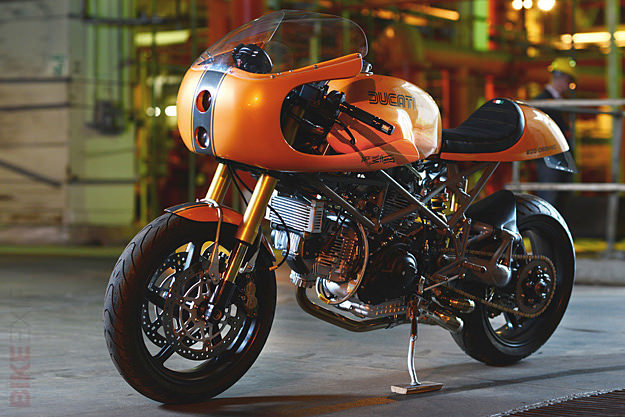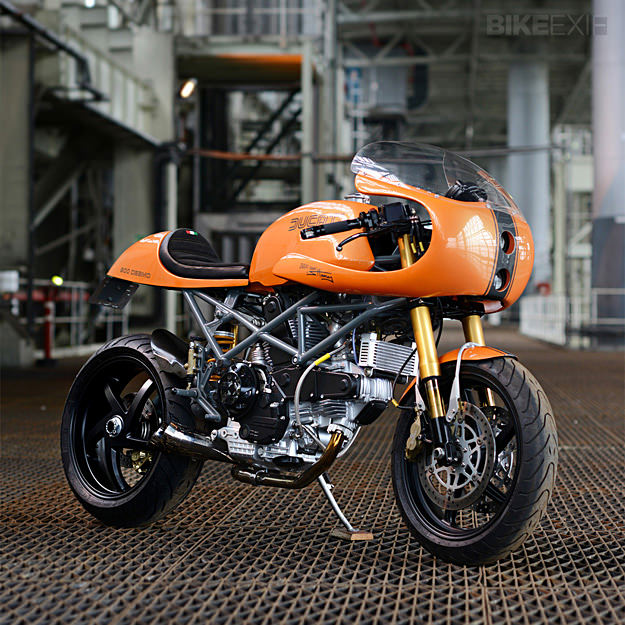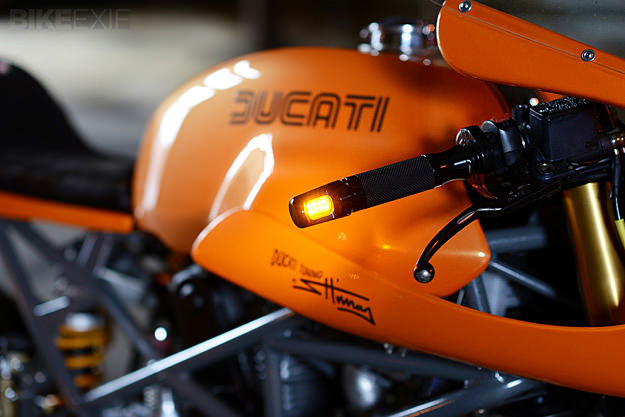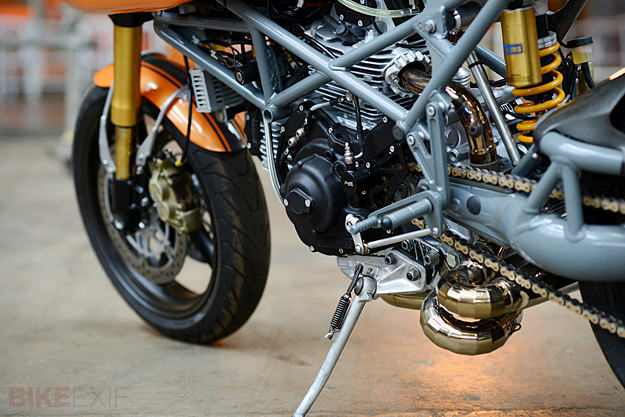
Ducati used to build simple air-cooled V-twins in pretty trellis frames that people wanted to customize. In the 1970s, the Bologna marque established an almost definitive look: Long, contoured tanks and deeply sculpted race seats.
But then Ducati changed tack. The visual flat line running parallel to the road disappeared, replaced by sloping tanks and seats meeting in a V-shape between the wheels. It’s sound engineering, but less easy on the eye. And it makes it hard to give a modern Ducati retro looks.

Thanks to designer Pierre Terblanche, we had a brief five-year respite, when Ducati launched the SportClassic—a bike with bevel-head looks, reliable twin-spark power and an up-to-date chassis. It was all over by 2010, but Steve Hillary of the UK’s Red Max Speed Shop wasn’t taking that lying down.
Being the owner of a Ducati Paul Smart 1000LE, Steve knew he’d be onto a winner if he could create a SportClassic/Imola-style tank that would fit the Ducati Monster. There were a few similar things going on in Italy, but nothing in the UK.

Steve’s plan to build a run of tanks quickly turned into a complete bike commission for a customer called Buck—and the stunning orange “Ducafe” we’re looking at here was born.
The donor bike is a 900cc Monster with the rear subframe modified to fit a Red Max Café Racer seat. It complements the Red Max Sport Classic tank perfectly, but it’s the addition of the blunt-nosed fairing that really makes this bike stand out. The frenched-in stacked headlamps were donated from a Ducati 999, and the style is matched at the rear with lighting neatly embedded into the seat unit.

Another standout addition is the single-sided trellis swingarm, which comes from an S2R. Lightweight five spoke wheels are attached via Öhlins forks and a 916SP rear shock. Pure quality, courtesy of eBay.
The engine has been treated to a top-end rebuild, with fuelling now handled by a set of bell-mouthed FCR Keihins. And then there’s that exhaust … stainless steel robot-welded pipes snake under the engine and swingarm, finishing with two GP-style shortie exit pipes. Apparently it sounds as good as it looks.

Neat touches are everywhere you look, but you can’t escape the metallic orange paint scheme. The color is from the Lamborghini color chart: It’s a three-stage paint designed for the Diablo, and it stands out even more against the pale grey of the trellis frame and swinger.
But for Steve, it’s not just about the build—it’s about the ride. “She doesn’t disappoint,” he says. “Hard, fast and loud, as a Duc should be.”
Just what we wanted to hear.
Images by Greg Moss. Red Max thanks Pitlane in Winchester for the paint, and Stuey at Accutek for the wiring and “intelligent relay technology.”
